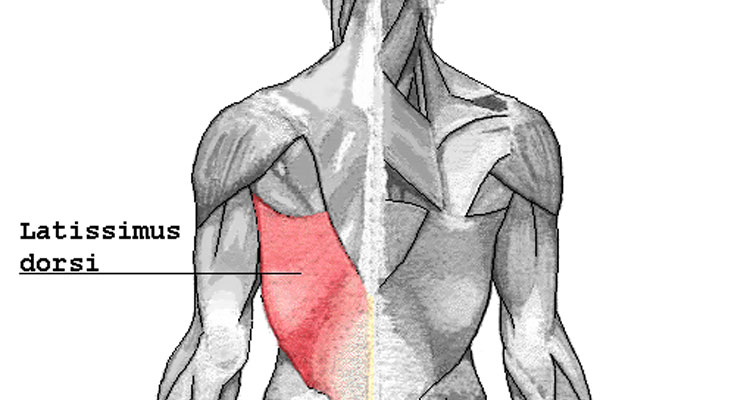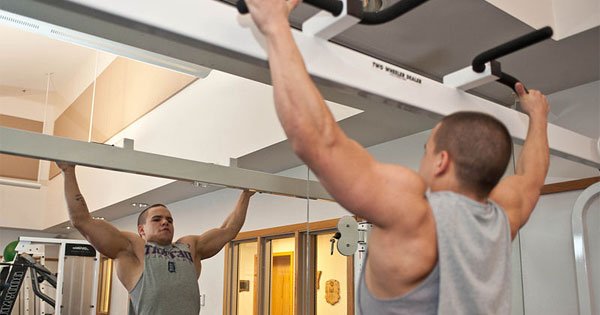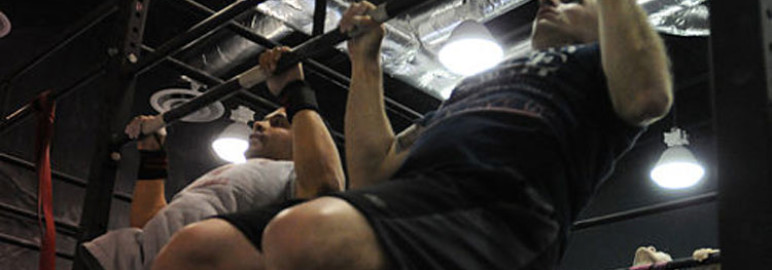Looking to pull off your first pull-up or improve the number of pull-ups you can do? Look no further! Below are ten tips to improve your pull-up.
What doesn’t work
First lets talk about movements most people do that will not get you where you need to be for a pull-up. Not to say that these might not be useful exercises overall.
- Lat Pulldowns. I believe these did not work for a few reasons. First of all, there is only so much you can pull without the barrier on your legs – at some point you’ll fly up with the bar. The barrier recruits your hip flexors, which should not be pulling to that degree (or at that angle) in a proper pull up. Second of all, the lat pulldown does not mimic the mechanics of the pull up, making it a poor assistance exercise for this movement.
- Assisted pull up machines. I never approached a bodyweight pull up using these things. The standing variety of this machine seems to be a little bit better for mimicking pull up mechanics than the kneeling kind. However, in both cases, although my ability to do a machine pull up improved, my ability to do a bodyweight pull up did not. Elastic band assistance had the same effect for me.
What works

1. Hanging
If you’re going to pull yourself up from a hanging position, you’d best learn how to hang first. Many people find just holding on to the bar is the most challenging part of the pull up. I’ve said it before, and I’ll say it again – a strong grip leads to a strong upper body. So get your hang on.
Try to hang from a bar for as long as your hands will let you. If your grip is already pretty strong, you can try things like thick bar hangs (use thick grips, or wrap a towel or other similar material around the bar to make the bar as thick as you like), two-finger hangs, one-finger hangs, one-arm hangs, and so on. To make things more challenging, try weighting yourself or changing your leg position. I like to do hanging leg raises from my one-arm hang position.
2. Scapular Pull-Ups

Scap pull ups are really good for people who have trouble activating their lats (which should be the first move you make in a pull up). The ability to hang with straight arms, and then pull your shoulder blades down your back, is an excellent way to learn how to initiate a pull up with your lats and make your back stronger for pulling.
3. Batwings
I learned about batwings from the ever-amazing Dan John. Essentially, you lie facedown on a bench with a relatively heavy kettlebell or dumbbell in each hand. Pull the weights all the way up with the intention of touching your thumbs to your armpits, and squeeze your shoulder blades together for 5+ seconds. This is a fantastic way to help increase your pulling strength.
4. Bottoms-Up Holds and Presses
Bottoms-up kettlebell work increases your crush grip strength, your core strength, and your shoulder stability, which might just give you the edge you need to increase your pull up strength.
5. Hollows or Bananas
If you are going to do a really good pull up, you are going to need to learn how to create a gymnastic-type “hollow” position with your body. Bananas create this kind of position from the ground, and give you some excellent abdominal strength, too.
Basically, shove your lower spine into the ground from a lying-down position. Try to remove all the air between your lumbar curve and the floor. Stick your legs together and lock your knees. Lift your shoulders and your legs a bit off the floor, and put your arms straight behind you in line with or behind your ears. Hang out there as long as you can stand it. For more of a challenge, try to maintain your position and rock back and forth.
6. Reverse Hollows
From your pushup position, keep your tailbone tucked and walk your hands out in front of you as far as you can. Hold for time.
7. Ground Pull-ups
Assume your banana hollow position on the ground. Now grab a bar at pull up height (either with a partner holding it, or with some sort of creative maneuvering like I did in the video). Pull your shoulder blades down your spine and maintain your banana position. Pull your body up until your throat is level with the bar. Lather, rinse, repeat.
8. Isometrics

You may know by now that I am a huge fan of isometrics for building strength. For pull ups, I like to do weighted holds in my weakest areas for 5-10 seconds (for me, it’s the top of the pull). I also do a lot of bodyweight and weighted pull up isometrics at various levels of the movement. I found this to be extremely useful for building strength for heavier pulls.
9. Negatives
This is the only kind of negativity I allow in the gym. Use a step or a boost or a jump to get your body to the top of the bar so that your chin is over the bar. Ideally, start with your throat level to the bar. Hold that top position for a few seconds, and lower yourself very slowly until your arms are straight. These days, I have been doing my negatives with 24kg and above to help meet my goal of a 24kg weighted pull up.
10. Partner-Assisted pull ups
If you can’t quite get your pull up, recruit a partner to help you. Instead of grabbing your feet or lower legs like many people do (which gets you out of form and allows you to recruit your legs to push you up), have them support you behind your ribs. Make sure you maintain proper pull up form throughout the movement, and only allow your friend to help as much as is needed.
Read more at BreakingMuscle













